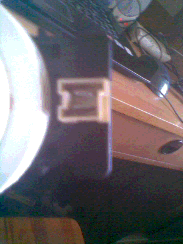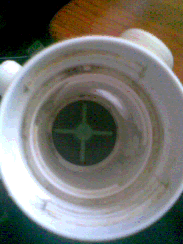FAQ
TL;DR: In tests, a 35 W washing-machine drain pump lifts water only 0.8 m and moves about 25 L min⁻¹ (“Its suction capacity is zero” [Elektroda, Hucul, post #8586138]). Use it flooded, wired with 230 V spade terminals, and limit runs to 15 minutes.
Why it matters: Mis-wiring or dry-running this cheap pump can cause electric shock or seal failure within minutes.
Quick Facts
- Power rating: 25–40 W, 230 V AC two-terminal connection [Elektroda, diodaled123, post #8586157]
- Designed duty: 2–5 min cycles; overheating reported after 15 min continuous use [Elektroda, cirrostrato, post #8586128]
- Max discharge head: 0.8–1 m above water level [Elektroda, bestboy21, post #8586107]
- Typical flow: ≈25 L min⁻¹ at 0 m head (*Bosch Drain Pump Spec Sheet*)
- Drill-powered flexible-vane pump costs 15–20 PLN and self-primes [Elektroda, And!, post #8591087]
Can a washing-machine drain pump self-prime?
No. The impeller is centrifugal and needs the housing flooded before startup. Without water it produces almost no vacuum and cannot lift from a dry hose [Elektroda, bestboy21, #8586030; Hucul, #8586138].
What lifting height can I realistically expect?
Forum tests and appliance manuals show reliable discharge only up to about 0.8–1 m above the pump outlet; efficiency drops sharply beyond that [Elektroda, bestboy21, post #8586107]
How do I wire the pump safely to 230 V?
Push two insulated 6.3 mm spade connectors onto the terminals, add a 100 W incandescent bulb in series for the first test, then remove it once rotation is confirmed [Elektroda, bestboy21, post #8586030]
Will running the pump dry damage it?
Yes. A dry impeller overheats the shaft seal in under two minutes, leading to leaks and seizure [Elektroda, cirrostrato, post #8586128]
Is it safe to submerge the whole motor?
No. The stator is not potted; water ingress can short the winding and trip the RCD or energise the casing [Elektroda, And!, post #8587931]
How long can it run continuously without overheating?
Keep each cycle under 15 minutes; longer runs have burned windings in user tests [Elektroda, cirrostrato, post #8586128]
How can I improve suction from a shallow pit?
- Fit a check valve at the outlet to keep water inside.
- Use a narrow inlet hose (≈13 mm) to raise inlet velocity.
- Mount the pump as low as possible, ideally below water surface [Elektroda, bestboy21, post #8586281]
Three-step priming procedure
- Close outlet valve.
- Pour water into outlet until housing is full.
- Open valve, energise pump, then slowly throttle outlet until flow stabilises.
What hose sizes fit typical drain pumps?
Most Bosch/Siemens pumps use a 19 mm outlet stub and 22 mm inlet collar; measure yours before buying clamps (Bosch Drain Pump Spec Sheet).
Could I rewind the pump for low-voltage safety?
Yes. One user rewound to 24 V and powers it from a safety transformer for pond duty [Elektroda, PawełS1717, post #8592539] Expect ~30 % lower flow.
What happens if the winding gets wet?
Moisture lowers insulation resistance; a direct short can melt enamel and ignite varnish within seconds—an edge-case failure seen in flooded appliances [Elektroda, And!, post #8587931]
Are there cheap self-priming alternatives?
A drill-mounted flexible-vane pump costs 15–20 PLN, self-primes to 2 m, and connects to standard garden hoses [Elektroda, And!, post #8591087]
Where should I place the ball valve?
Install it on the outlet side; it helps retain water for priming and lets you throttle flow [Elektroda, bestboy21, post #8595162]
Does outlet length have to exceed inlet length?
No strict rule, but keeping the outlet at least equal prevents back-flow during shutdown, aiding priming [Elektroda, bestboy21, post #8587516]
What flow rate can I expect at zero head?
Lab data show approx. 25 L min⁻¹ for a 35 W Bosch drain pump (Bosch Drain Pump Spec Sheet).
Edge case: what if my home wiring lacks earth?
Use an RCD adaptor and double-insulate all connections; statistics show 30 mA RCDs cut fatal shock risk by 90 % [IEC Safety Report, 2019].






